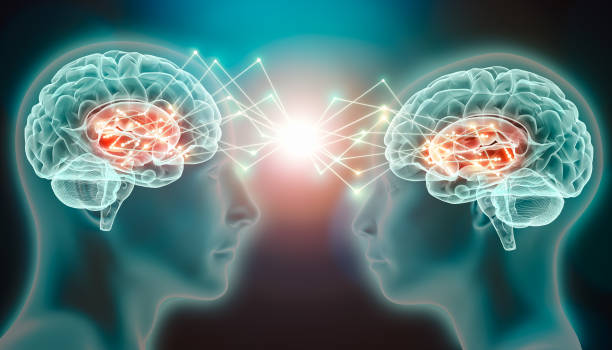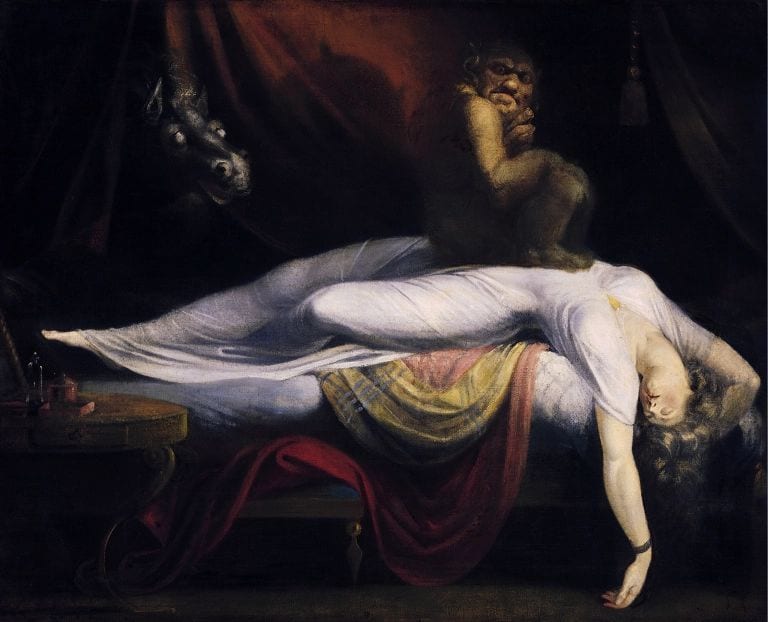Somewhere in a café, a glance lingers a beat too long. Somewhere in a crowded subway, a stranger’s smile makes someone feel like the only person on Earth. And somewhere else, a child clutches their parent’s hand for the first time and feels, without knowing the word for it, that they are safe.
These moments seem fleeting, delicate, unquantifiable.
But inside the human brain, something thunderous is happening.
Neuroscientists today can peek inside the skull and see love light up the circuitry of the mind in real time. Love—once the subject of poetry and philosophers—has now become the study of labs, MRIs, and data sets. And what they’re discovering is this: love doesn’t just touch the heart. It rewires the brain.
Forever.
In this emotionally engaging journey, we’ll explore how falling in love, staying in love, and even losing love physically changes your brain. From dopamine highs to oxytocin-fueled bonds, from heartbreak’s pain to love’s resilience, we’ll explore the incredible neural dance that makes us human.
The Spark: What Happens in Your Brain When You Fall in Love
When people describe falling in love, they often use the language of electricity. “It was like a spark,” they say. “A jolt. A rush.” And they’re not wrong. Underneath the surface of that first crush, the brain unleashes a biochemical storm that rivals the intensity of any drug.
In the initial stages of attraction, your brain’s reward system roars to life. The nucleus accumbens, ventral tegmental area (VTA), and caudate nucleus—regions deeply connected to pleasure and motivation—begin to flood your system with dopamine, the brain’s “feel-good” chemical.
This dopamine surge gives you that euphoric feeling, that almost obsessive preoccupation with the object of your affection. You’re not just metaphorically high on love—you’re literally experiencing a neurological high.
Studies using functional MRI (fMRI) have shown that when people view photos of someone they’re intensely in love with, these reward areas light up brightly, similar to the brains of individuals under the influence of cocaine. This isn’t to say love is an addiction—but in its early stages, it behaves like one.
But love isn’t only about dopamine.
The hypothalamus pumps out oxytocin, often dubbed the “cuddle hormone.” This neuropeptide is linked to trust, bonding, and the warm fuzzies we associate with being emotionally connected. Vasopressin joins in too, playing a key role in long-term pair bonding. These chemicals strengthen emotional intimacy and deepen attachment.
Meanwhile, serotonin levels drop—which, strangely, may contribute to obsessive thinking and daydreaming about the person you’re falling for. This might explain why new lovers often report being unable to think of anything—or anyone—else.
In short, falling in love is not just an emotional event. It’s a full-blown neurological upheaval.
The Brain on Love: Building Bonds and Deep Connections
Beyond the butterflies of new romance lies something more profound: the steady, stable connection that forms over time between humans—whether romantic partners, close friends, or parents and children.
Love, in its deeper stages, becomes a powerful sculptor of the brain.
The same oxytocin that fuels early connection continues to reinforce trust and closeness. In long-term relationships, oxytocin levels remain elevated during moments of physical affection, shared laughter, and even synchronized behavior. Every warm embrace, every deep conversation, lays another neural brick in the foundation of love.
In long-term couples, studies have found that just seeing a partner’s face can reduce stress-related activity in the amygdala, the part of the brain responsible for fear and anxiety. This suggests that love acts like an emotional anchor, helping regulate and soothe the nervous system.
But it’s not just romantic love that rewires our neural networks.
Parents experience profound brain changes when they bond with a child. In both mothers and fathers, brain scans reveal increased activity in regions associated with empathy, motivation, and planning. The result? A neurological shift that prioritizes care for another human being over personal comfort or risk avoidance.
This is nature’s way of hardwiring love into our survival blueprint. The brain doesn’t just experience love—it adapts to it.
Mirror Neurons: Feeling What They Feel
One of the most fascinating discoveries in modern neuroscience is the existence of mirror neurons. These are special cells in your brain that fire both when you perform an action and when you observe someone else performing that same action.
When you see someone you love smile, your mirror neurons replicate that expression internally. You feel the emotion behind it. This neural mimicry creates a kind of brain-to-brain connection that underlies empathy, emotional resonance, and deep social bonds.
In romantic relationships, this mirroring becomes even more profound. Couples who are deeply bonded often show synchronized brain activity—when one partner’s brain is scanned during emotional moments, the patterns in their partner’s brain mirror them.
This neurochemical resonance is what allows us to “feel seen,” to sense when something’s wrong, to share emotions without words. It’s a powerful form of unspoken communication—one that turns two separate nervous systems into a kind of duet.
Love doesn’t just live in thoughts and feelings. It echoes in your neurons.
Heartbreak: The Brain’s Most Painful Lesson
If love rewires the brain to bond, what happens when that bond is broken?
Heartbreak is not merely a metaphor. It’s a neurological and physiological event. And for the brain, the pain of romantic loss closely resembles physical injury.
Studies using brain imaging have found that social rejection activates the same brain regions that light up during physical pain, particularly the anterior cingulate cortex. This suggests that the hurt of being left or losing a loved one isn’t just emotional—it’s visceral.
This makes evolutionary sense. Our brains are wired to form close bonds because those bonds increased survival. Losing a connection—especially one the brain has invested in chemically and emotionally—triggers a kind of neural withdrawal. Dopamine levels plummet. Oxytocin dries up. Cortisol, the stress hormone, surges.
Some people even experience what’s known as “broken heart syndrome,” or stress-induced cardiomyopathy—a condition in which intense emotional pain can actually damage heart muscle. It’s rare, but it shows just how deeply intertwined love and biology are.
But here’s the hopeful part: the brain, while deeply affected by heartbreak, is also astonishingly resilient.
With time, and new connections, the brain can—and does—rewire itself again.
Neuroplasticity: How Love Reshapes Who You Are
One of the most extraordinary aspects of the brain is its neuroplasticity—the ability to reorganize and form new neural connections throughout life. And love is one of the most potent forces driving this change.
When you fall in love, when you raise a child, when you care for a friend—you’re not just changing your habits. You’re changing your brain’s structure. You form associations. You build memories. You link emotions to faces, places, smells, touches.
These experiences physically alter synaptic pathways, strengthening some circuits while letting others fade.
Over time, loving relationships shape your brain’s expectations of the world. If you are nurtured and supported, your brain becomes more attuned to trust, openness, and emotional safety. If love is withdrawn or inconsistent, your brain may become hyper-alert to rejection, hesitant, or overly protective.
Even in adulthood, therapy, new relationships, and meaningful connections can help rewire those patterns, healing emotional wounds that were once etched into your neural circuits.
In essence, your brain writes and rewrites its story of love across your lifetime.
Love Across the Lifespan: From Passion to Compassion
Love doesn’t stay the same. It evolves.
In early life, love is primarily about attachment and security. As teenagers, it’s about identity and exploration. As adults, it may become about partnership, commitment, and family. And in later years, it often shifts into something quieter but no less profound: deep companionship and emotional resonance.
Neurologically, this evolution is mirrored in changes in brain activity.
Early-stage romantic love is driven by the brain’s reward system and novelty centers. But long-term love activates areas associated with attachment, caregiving, and emotional regulation. In elderly couples, brain scans often show increased activity in regions related to empathy and less in areas linked to impulsivity.
This doesn’t mean love grows dull—it means it matures.
The flame may change color, but it burns deeper.
Love as a Superpower: The Cognitive and Emotional Benefits
People in loving relationships—romantic or platonic—often enjoy better mental health, improved immune function, lower blood pressure, and increased lifespan. That’s not just coincidence. It’s neurobiology.
Positive relationships buffer against stress by regulating the hypothalamic-pituitary-adrenal (HPA) axis. When you’re with someone you trust and love, your cortisol levels drop. Your parasympathetic nervous system kicks in. You heal faster, both physically and emotionally.
Love also enhances memory. Emotional connection activates the hippocampus, the brain’s memory center. This is why memories tied to loved ones are often the most vivid. Love doesn’t just fill your heart—it sharpens your mind.
And perhaps most importantly, love helps build resilience.
Through love, the brain learns to adapt, to hope, to dream. It gives you someone to fight for, someone to become for, someone to believe with. This is not soft science. This is the hardwiring of the human spirit.
Conclusion: Love is the Brain’s Greatest Story
In the end, love is not an escape from biology—it is the pinnacle of it.
It transforms circuits, balances chemicals, and reshapes identity. It offers ecstasy, yes, but also shelter. It brings both chaos and clarity. It teaches the brain how to attach, how to trust, how to grow, and—if needed—how to heal.
What your brain does in the presence of love is nothing short of miraculous. It forms new paths. It sings. It synchronizes with another person’s rhythms. And it remembers.
Long after the first kiss, the first heartbreak, or the last goodbye—your brain carries the imprint of every love you’ve ever known.
So the next time your heart skips a beat, remember: it’s not just your heart. It’s your brain—rewiring itself, one connection at a time, in the beautiful, mysterious, science-laced symphony we call love.






